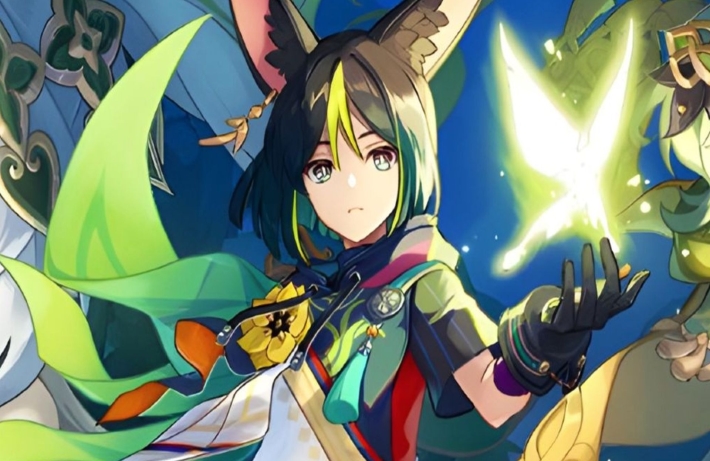Japanese gaming websites are known for their unique and distinctive design elements, including the use of special characters. These characters are an essential part of the Japanese language and culture, and they play a significant role in the design and functionality of gaming websites.
In this article, we will explore the special characters used in Japanese gaming websites, including character encoding and fonts, iconography and emoji usage, user interface design elements, and interactive elements. By understanding these elements, readers will gain insight into the unique design and functionality of Japanese gaming websites and appreciate the cultural significance of these special characters.
Key Takeaways
- Japanese gaming websites utilize special characters that are an essential part of the Japanese language and culture.
- These characters play a significant role in the design and functionality of Japanese gaming websites, including character encoding and fonts, iconography and emoji usage, user interface design elements, and interactive elements.
- Understanding these special characters can provide insight into the unique design and functionality of Japanese gaming websites and their cultural significance.
Overview of Japanese Gaming Websites
Japanese gaming websites are known for their unique design and special characters that are often used to represent different aspects of the gaming industry. These websites have a significant cultural influence in Japan and are a popular source of information for gamers around the world. Good example of a Japanese gaming website is コニベット
Cultural Influence
Japanese gaming websites are heavily influenced by Japanese culture and often feature characters from popular anime and manga series. These characters are used to represent different genres of games and are often featured in promotional material and advertisements.
In addition to anime and manga characters, Japanese gaming websites also incorporate traditional Japanese symbols and imagery into their design. This includes cherry blossoms, samurai swords, and other elements that are representative of Japanese culture.
Popularity and Trends
Japanese gaming websites are extremely popular among gamers around the world, and many people look to these websites for the latest news and information about the industry. These websites often feature reviews, previews, and other content that is of interest to gamers.
One trend that has emerged in recent years is the use of mobile gaming. Many Japanese gaming websites now offer mobile versions of their sites, which allow gamers to access content on the go. This has helped to increase the popularity of Japanese gaming websites and has made them more accessible to a wider audience.
Overall, Japanese gaming websites are a unique and important aspect of the gaming industry. With their special characters and cultural influence, these websites are a must-visit for gamers who are interested in Japanese culture and the latest trends in gaming.
Character Encoding and Fonts
Unicode and Shift JIS
Japanese gaming websites often use a combination of Unicode and Shift JIS character encodings. Unicode is a universal character encoding standard that includes a vast range of characters from different languages and scripts, including Japanese. Shift JIS, on the other hand, is a Japanese-specific character encoding that includes both Japanese and Roman characters.
While Unicode is more commonly used, Shift JIS is still used for certain Japanese characters that are not included in Unicode. It is important for Japanese gaming websites to support both encodings to ensure compatibility with all users.
Font Styling and Compatibility
Font styling is also an important aspect of Japanese gaming websites. Many websites use custom fonts to create a unique and distinctive look. However, it is important to ensure that the font is compatible with all devices and browsers.
Japanese gaming websites often use a combination of different font styles, including serif and sans-serif fonts, to create a visually appealing design. It is important to keep in mind that certain fonts may not be compatible with all devices and may not display correctly.
To ensure maximum compatibility, Japanese gaming websites often use a fallback font system, where a series of fonts are listed in order of preference. If a user’s device does not support the first font, the website will automatically switch to the next font in the list. This helps to ensure that all users can view the website correctly, regardless of their device or browser.
Iconography and Emoji Usage
Common Icons
Japanese gaming websites often use a variety of icons to convey information quickly and efficiently to users. Some of the most common icons include:
- Heart: Used to indicate a user’s favorite games or content.
- Star: Used to indicate popular or recommended games.
- Clock: Used to indicate time-limited events or promotions.
- Trophy: Used to indicate achievements or accomplishments.
- Coin: Used to indicate in-game currency or virtual rewards.
- Chat Bubble: Used to indicate chat or messaging features.
These icons are typically simple and easy to understand, making them effective in conveying information to users at a glance.
Emoji Integration
In addition to common icons, many Japanese gaming websites also make use of emojis to enhance communication with users. Emojis are often used in messaging features, comments, and social media posts to convey emotions or reactions.
Some common emojis used in Japanese gaming websites include:
- 🎉: Used to indicate celebration or excitement.
- 💔: Used to indicate disappointment or sadness.
- 😍: Used to indicate admiration or love.
- 🤔: Used to indicate confusion or curiosity.
- 🤩: Used to indicate excitement or enthusiasm.
Emojis can help create a more engaging and personalized user experience, allowing users to express themselves more easily and connect with others who share similar interests.
User Interface Design Elements
Layout and Navigation
Japanese gaming websites often feature a clean and organized layout that makes it easy for users to navigate and find what they are looking for. The use of drop-down menus, tabs, and icons are common design elements that help to improve the user experience.
In addition, Japanese gaming websites often prioritize the placement of important information, such as game updates, news, and events, in easily accessible areas of the website. This helps to keep users engaged and informed about the latest developments in the gaming world.
Color Schemes and Themes
The use of bold and vibrant colors is a common design element found on Japanese gaming websites. Bright colors such as red, blue, and green are often used to create an energetic and exciting atmosphere that appeals to gamers.
Furthermore, Japanese gaming websites often incorporate themes related to the games they feature. For example, a website for a role-playing game may use a medieval-themed design, while a website for a racing game may use a sleek and modern design. This helps to create a cohesive and immersive experience for users.
Overall, Japanese gaming websites prioritize user experience and engagement through the use of clean layouts, easy navigation, and visually appealing design elements.
Interactive Elements
Animation and Effects
Japanese gaming websites are known for their use of interactive elements, particularly animation and effects. These elements are used to enhance the user experience and make the website more engaging. Animations are often used to provide feedback to users when they interact with different elements of the website. For example, when a user clicks on a button, an animation may be triggered to indicate that the action has been registered.
Effects are also used to make the website more visually appealing. For example, hover effects may be used to highlight different elements of the website when the user hovers their mouse over them. These effects can help to draw the user’s attention to important information or features of the website.
Gamification Techniques
Gamification techniques are also commonly used on Japanese gaming websites. These techniques are used to make the user experience more engaging and to encourage users to interact with the website more frequently. One common gamification technique is the use of badges or achievements. Users can earn badges or achievements by completing certain actions on the website, such as playing a certain game or reaching a certain level.
Another gamification technique is the use of leaderboards. Leaderboards can be used to display the top users on the website based on certain metrics, such as points or levels. This can encourage users to compete with each other and strive to improve their rankings on the leaderboard.
Overall, the use of interactive elements and gamification techniques on Japanese gaming websites helps to create a more engaging and enjoyable user experience.





